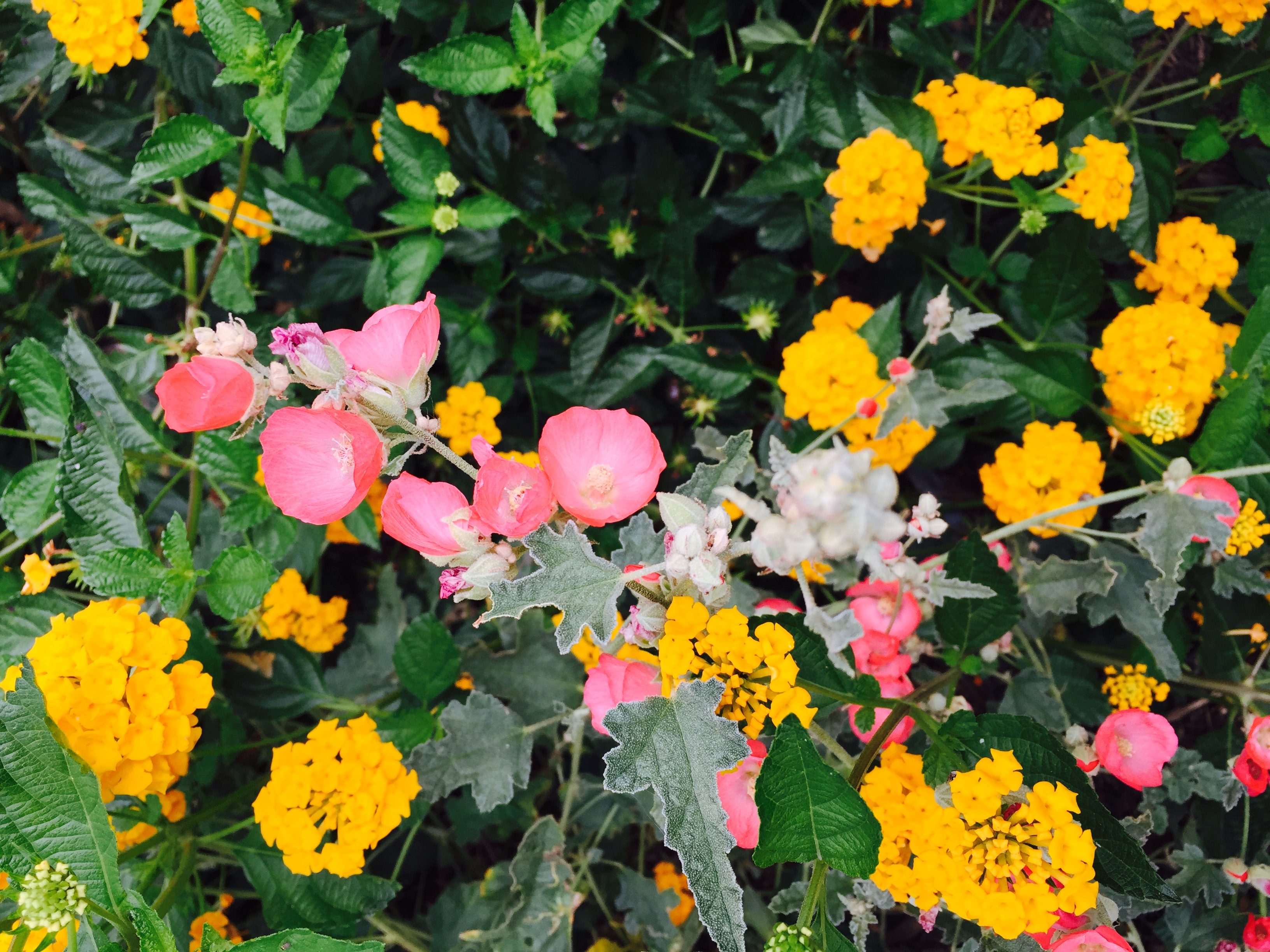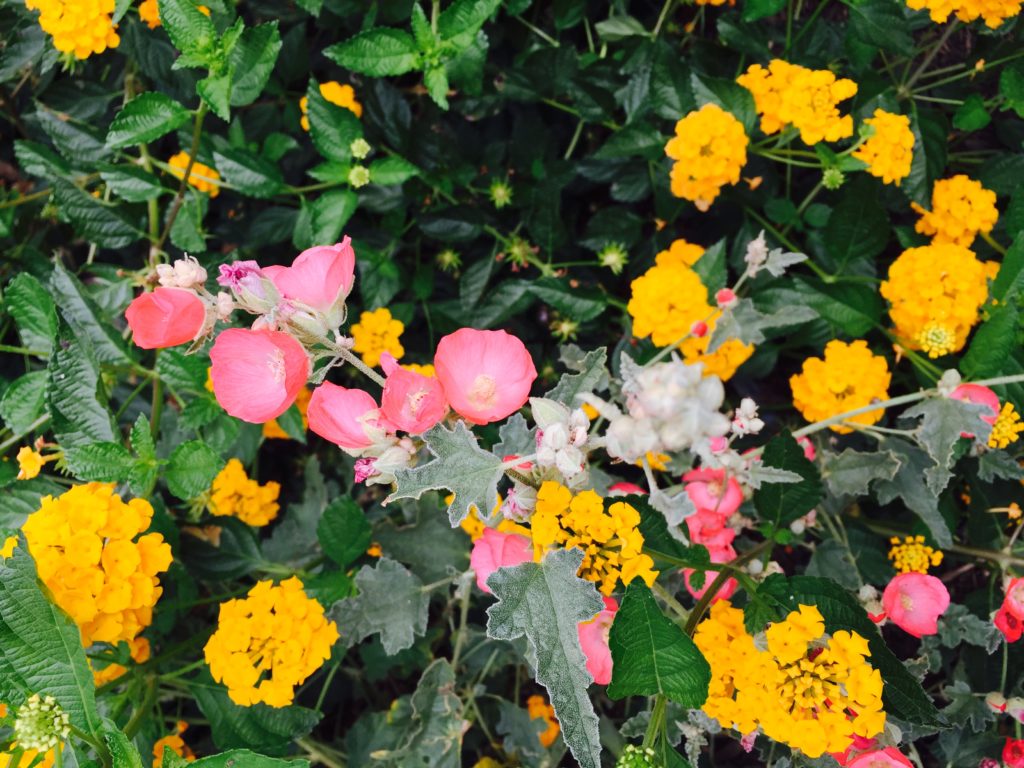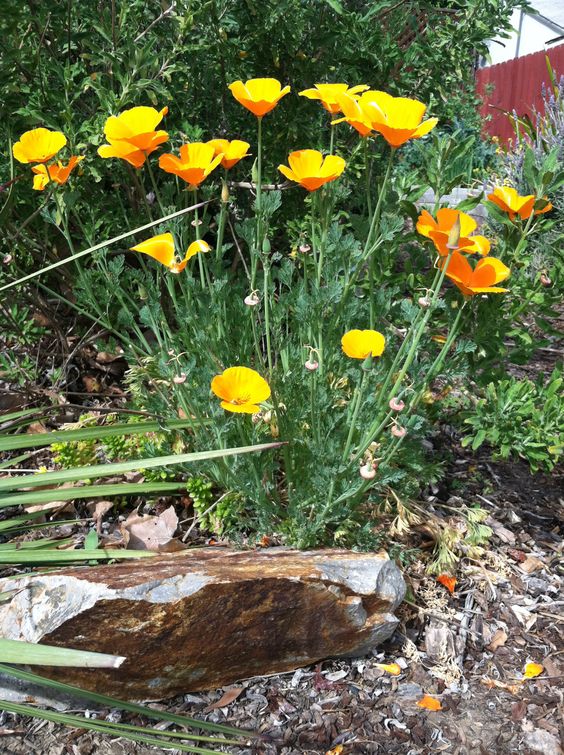

This is a hard and fast lesson so strap in! Have a pair of sharp shears. I like Fiskars products and their bypass pruner is expensive but worth it.
Your cuttings can be composted so get your bucket and find a good place to dump some clippings. If you don’t have a compost bin, just make a pile in your yard and cover with a tarp, or use a trash can or plastic bin or even a trash bag with holes punched in it.
I also prep some soil with compost and fertilizer in it or even some mulch or wood chips or composted leaves to add around my plants after I prune them.
Then head out. Make a circle around your property or head to the most neglected plants first. This may take a couple days. It’s a big project but pays big dividends.
And after your clean-up, you can reward yourself by sprinkling your poppy seeds around!
Plants listed below under hard pruning need a strong forceful brave cutting back, meaning every branch is cut back from a foot to a few inches from the ground – depending on your comfort level and the look you are going for and THE PLANT. I like to cut back to where I can see some shoots or leaves growing at the base of the stem. Cut at an angle and try to keep your cuts neat. This is where sharp shears come in handy.
This hard pruning is only applicable to ESTABLISHED PLANTS. These are mature plants that have been planted for at least a year in your yard.
In general, you prune branches that are dead or diseased, branches that are suckers, branches that cross other branches and branches that are heading in the wrong direction such as back against the center of the plant. Each plant has their own distinctive needs and requirements. This is a general recommendation to simplify and educate. Please feel free to take your education further! Nothing better than experience. And it’s ok to make mistakes. Really. It is.

Again: these lists don’t take into account every plant but some of the most common. Do your own research or hit us up with a question and we can learn together.
PLANTS TO HARD PRUNE AND COMPOST THE CLIPPINGS
Sages & Salvias: Native Butterfly Sages, Salvia Greggi, Jerusalem Sage, Waverly Sage, Mexican Sage, Russian Sage, and on and on
Peppers
Milkweed
Guara
Butterfly Bush
Verbena
Lantana
Mallow
Grasses
Manzanita
Toyon
Ceanothus
Perennial Herbs: Basils, Lemon Verbena, Lemon Balm, Pineapple Sage, Mint, etc.
Grevillea
Westringia
Thryptomene
Vitex
Rockrose
Firecracker Plant
Leucadendron
Euphorbia
Lion’s Tail
Ferns
Texas Ranger
Cassia
PLANTS TO HARD PRUNE BUT THROW AWAY THE CLIPPINGS
Roses
Invasive Plants
Diseased Plants
PLANTS NOT TO PRUNE. – These plants can be shaped for size and beauty but don’t NEED the hard cut-back we are talking about here.
Rosemary
Lavender
Cape Plumbago
Wax Flower (Chamelaucium x Verticordia)
Vines
Penstemon
Pittosporum
Hop Seed Bush or other hedge plants
Cordyline
Flax
Succulents that are leggy can be cut back and their clippings replanted. Some really benefit from this, like calandrina (rock purslane).
PLANTS TO DIG UP, THIN/DIVIDE AND REPLANT OR GIVE AWAY
Kangaroo Paw
Lillies
Yarrow
Aloe
Bulbine
Agapanthus
Yucca
Agave
PLANTS TO LIGHTLY PRUNE
Blueberry bushes
Beware pruning Firesticks and other succulents without gloves as their white sap can be very toxic.
